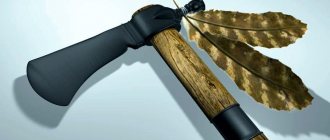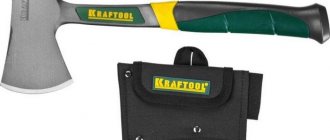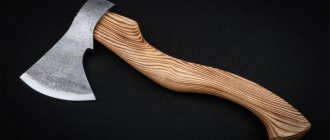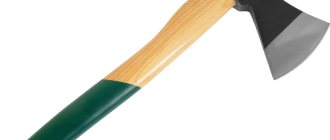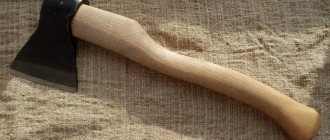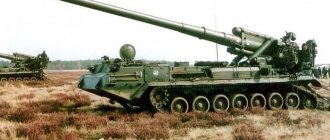The tomahawk is a type of one-handed ax from North America, traditionally small in size with a straight shaft. The name entered English in the 17th century as an adaptation of a Powhatan (East Algonquian) word.
Tomahawks were general purpose tools, used by Native Americans and European peoples alike, and were often used as melee or thrown weapons. Metal tomahawk heads were originally designed based on the boarding axes of the British Royal Navy and were used as a commodity in trade with the Native Americans, in exchange for food and a variety of products.
History of the tomahawk
The Algonquian Indians were the first indigenous peoples in America to create the tomahawk. Before Europeans came to America, Native Americans used stones attached to wooden handles using strips of rawhide. Although these axes were typically used as weapons, they could also be used for everyday tasks such as chopping, cutting or hunting. When Europeans arrived in North America, they introduced the natives to metal blades, which greatly increased the effectiveness of the tool. Metal does not break as easily as stone and could be used for additional purposes. Native Americans added to the tomahawk's butt (the side opposite the blade), which now consisted of a hammer, spike, or tube. Such axes became known as pipe tomahawks, and consisted of a bowl on the butt and a hollow shaft (for smoking tobacco). Similar items were created by European and American artisans for trade and diplomatic gifts to tribes.
Tomahawk axe: history, origin of the name, types and characteristics
It is believed that the word "tomahawk", which gave the ax its name, came from a mispronunciation of the Indian word "tamahakan" - a cutting object.
In pre-Columbian America, the Indians used this word to describe something like “a stone with an elongated shape, sharpened on both edges and mounted on a wooden handle.” And this device didn’t look at all like how it all looks in movies about Indians. It was only with the discovery of America that the word “tomahawk” began to refer to metal axes.
Characteristics and Similarities of Tomahawks
Ax blades have many shapes that roughly resemble a wide variety of axes from different eras or spearheads that lie perpendicular to the shafts. Butts also have several shapes that resemble other axes, such as peckers. Some butts were in the form of hammers or hammers with pins, square and round sections.
However, there was also an ax in the form of a small halberd. Due to its functionality, the ax was used in battle, hunting, and also in everyday life - it was used to cut down trees. The Indians needed this ax only for close combat; they threw it at enemies extremely rarely.
Axes were thrown mainly as sports equipment during training. The functionality of battle axes made it possible to remove the blades from the shafts and use them as a knife. Such axes weighed within half a kilogram, the length of the cutting edges of the blades was up to 100 mm, and the length of the straight shafts was within half a meter.
The emergence of tomahawks
Due to the fact that the manufacture of metal axes was inaccessible to the Indians, they exchanged them from the “pale-faced” who appeared in that area at the beginning of the 17th century. Thus, the first tomahawks were steel and improved battle axes of the British Marines, used for boarding ships.
Spanish tomahawks were different from English ones. They had wide, moon-shaped, rounded blades. The French living in Canada were the first to make tomahawks in the form of klevets.
Tomahawks - a formidable weapon of the Indians
By exchanging provisions for axes, the Indians turned them into even more formidable weapons. They also learned the technique of using axes and significantly outperformed their teachers, especially in close combat. In throwing, they themselves became unsurpassed masters - all the axes they threw always hit the target from a distance of up to 20 meters.
The functionality of the axes allowed even weak people to use them thanks to the lever handles. The characteristics of tomahawks made it possible to operate both in the thick of battles and in one-on-one combat. In addition, wounded animals were killed with axes.
The first tomahawks
Based on the finds, the first Indian axes can be dated back to the 16th-17th centuries. Axes with metal blades were similar to ancient stone and copper wedge-shaped axes, without holes for the shafts.
The metal parts of the blades were hammered or inserted with pointed ends into the shafts. Since such axes were called earless, they belong to the Celtic group.
Peace Tubes
Perhaps as the most common type of ax, we can talk about pipe tomahawks. Through channels were made in the shafts of the axes, and the upper parts of the shafts at the holes were plugged with round plugs made of wood, deer antlers, or even metals. Containers for tobacco were placed on the blades on the butt side. The result was an ax-pipe for smoking.
In addition, there were pipe tomahawks, which had sacred meaning. Specifically: “sacred pipes” or “peace pipes.” Special rituals were carried out with the participation of leaders and elders; ax pipes were lit in a circle, symbolizing reconciliation or the end of wars.
Pipe tomahawk
The “palefaces,” who respected local traditions, often used pipe axes. They were richly decorated as gifts to the leaders. The blades were engraved and the shafts were decorated with a wide variety of metal details.
Missouri tomahawks
Until the 19th century, some of the most sought-after battle axes were “Missouri.” They got their name from the local Missouri River. A characteristic feature of such axes was the presence of a large blade, which turned into a simple butt with a round eye.
This served as the name for lug tomahawks. The presence of large surfaces of the blades made it possible to make shaped holes for a more attractive appearance. The supply of such axes was carried out by the French living in Canada. Their cheap production made it possible not to harden the blades, because these were battle axes.
Espontone battle axes
From English “spontoon tomahawks” is translated as espontoon tomahawks. A wide variety of configurations and sizes of battle axes had characteristic twisted appendages at the base of the blades. In the European army, only sergeants could possess such weapons.
The tomahawk shafts did not wedge. Thanks to this, the metal parts of the ax blades could be removed from the shafts and used as combat knives. In addition, such blades were often attached to war clubs that were used by the Indians.
In most cases, cavities were made in esponton tomahawks, like in tubular axes. Sometimes one came across a number of earless espontone axes, similar to the ancient axes of the Celts.
Trade tomahawks
Trade tomahawks are the simplest and cheapest ax of all the tomahawks. They are characterized by the fact that the blades, turning into simple butts, were flat or rounded and were used as hammers.
There were also types of axes whose blades were double-sided. The shafts were inserted both above and below the holes, based on the types and shapes of the axes. Due to their shape, they were called “half-axes”, since they were very small in size.
The Indians used these mini-axes mainly for agricultural work, although also for war. Such axes were supplied by the manufacturing countries themselves: England, France, and Holland.
Halberd-type tomahawks
From English “halberd tomahawks” is translated as halberd tomahawks. These are exact copies of halberds, but with short handles. Mainly used in trade with the natives. The shafts were secured using cone-shaped bushings. This method of fastening was borrowed from copies.
At the ends of the ax shafts there were metal bayonets shaped like a sharp cone. The metal parts of the blades were solid, there were no slots. The shape of the blades was wide and semicircular on one side. While the other side and the top resembled a flat point.
Halberd tomahawks were in the “assortment”. Some had no points on top, and some had chisel-shaped points. In some, the points were replaced by curved hooks, spikes or smoking cups.
There were models with collapsible heads that could be screwed onto vertical bushings with threaded points. In addition, each of the points could be attached, of course, if there was a cut thread. There were also tomahawks that did not have bushings for the shafts, since they were entirely metal.
Halberd Tomahawk
Later, tomahawks with shafts made of brass and other metals appeared. They were inserted into sockets and riveted using rivets. Such shafts had a wide variety of shapes. They were flat, round, pointed at the ends.
Despite the fact that these products were not convenient for use in battle, the Indians used such axes to demonstrate their belonging to the leaders, because the presence of such axes was a sign indicating the status of the leader.
Main types of tomahawks
There were also battle axes-tomahawks, with hammers on the butts, or tomahawk-hammers, very similar to pipe axes, but not as elaborate as trade axes with hammers on the butts. Such axes were used not only by the Indians, but also by North American settlers, as well as colonist riflemen, who used them as belt axes.
Axes with points or hooks on the butt side are peak tomahawks, similar to boarding axes. Athapascan clubs can also be classified as tomahawks. These were products made from deer antlers with protruding branches into which points were inserted from whatever was at hand.
Indian woman with tomahawk
Tomahawks of our days
Despite the fact that almost 200 years have passed, tomahawks are still relevant today due to their functionality. Mainly attention was paid to them before the Vietnam War.
Peter Lagano, a well-known Indian at that time who served in the American army, managed to develop a peak tomahawk battle ax that could be thrown quite well.
Currently, the tomahawk ax can be used in tourism and in some sports, but most often it can be seen as a historical reconstruction.
Tomahawk design
Initially, the indigenous American tribes lacked the technology to process iron, which is why metal heads were not installed on tomahawks before trade with Europeans began. The original tomahawks had rounded sharp stones or deer antlers instead of metal heads.
The modern tomahawk shaft is usually about 60 cm long and was traditionally made from hickory, ash or maple. The heads weigh 260-570 g, the cutting edge, as a rule, is a little more than 10 cm from toe to heel. The butt can be in the form of a hammer, a spike, or simply be rounded, usually without protrusions. Sometimes, to smoke tobacco through a tomahawk, a bowl was placed on the butt, and a hole was drilled in the center of the shaft. There are also versions with a metal head of similar tubes. Tube tomahawks are artifacts unique to North America: created by Europeans as trade objects, they often served as diplomatic gift exchanges. They occupied a special place in diplomacy between Europeans and Indians as gifts, because they represented a vivid symbol associated with the cultural traditions of the American Indians: on the one hand, it is a “pipe of peace”, on the other, an “axe of war.”
Colonial French territory had a different tomahawk design, closer to the ancient European Francis, which was also used by both French settlers and the indigenous population. In the late 18th century, the British Army issued tomahawks to their colonial settlers during the American Revolutionary War, and axes served as weapons and tools.
Moneybox of knowledge
Eastern axes of the 16th-17th centuries.
Despite the fact that the ax in the XVI-XVII centuries. continues to be part of the armament of the eastern warrior, its combat use is increasingly fading away. In the 17th century the ax is already a ceremonial weapon and a distinctive sign of an officer in both the Turkish and Persian armies, as well as in some adjacent regions that fall under the influence of Turkey and Persia. Ceremonial weapons were rarely used in battle, only in case of an unexpected attack. It was intended to emphasize the high status of the owner. Therefore, as a rule, ceremonial weapons were decorated with silver and sometimes gold ornaments and precious stones. Eastern axes of the 16th-17th centuries.
112. Balta axe, Türkiye, 16th century. 113. Cavalry hatchet - chased, in the oriental style, Russia, 16th century. 114. Ax on a steel handle tabar, Persia, 17th century. 115. Ax on a steel handle tabar, Persia, 17th century. 116. Cavalry ax on a steel handle, with a double blade. Persia, XVII century.
Persian officer, 17th century.
Persian officer, 17th century.
Since the 7th century. Persia is alternately captured by Arabs, Turks, Mongols, and Turkmens. In 1502 the country regained independence. Under Shah Abbas I, Persia won a number of victories over the Ottoman Empire and subjugated Iraq, Georgia, Armenia, and Azerbaijan. Abbas, instead of an army based on tribal militias, creates a regular army, which includes musketeer riflemen, artillery and ghulam cavalry. Tactics and equipment of the Persian cavalry of the 17th century. changes little, unlike the reformed infantry. Combined chainmail armor, helmet, shield, and bracers are still used. Offensive weapons include a bow, jerida darts, a spear, a sword or a saber. Officers use a hatchet or mace. Indian battle axes, XVIII-XIX centuries.
A distinctive feature of most examples of Indian edged weapons in general and axes in particular is the high level of blacksmithing skill and its artistic and decorative component. Battle and ceremonial axes of the Indian region of the 18th-19th centuries. are numerous and varied in design and artistic decoration. But, despite the wide variety of types, battle axes in India, as in other regions of the globe, began to increasingly serve ceremonial functions over time. Indian battle axes, XVIII-XIX centuries.
117. Battle axe, India, 19th century. 118. Battle ax - Bhuj, northeast India, 19th century. 119. Battle and ceremonial axe, India, 19th century. 120. Battle axe, Central India, 18th century. 121. Dao battle ax, Naga tribe, eastern India 122. Tunga battle ax of the Khond people, South India 123. Battle and ceremonial ax of a nobleman, Central India, 19th century. African axes
The relatively labor-intensive production, compared to the club, led to the fact that the battle ax was among most African peoples the weapon of warlords and chiefs, as well as a symbol of the social status of rulers. As a rule, African axes do not have an eye and are attached using a stalk method. Some examples of axes can be used as throwing weapons (Fig. 127). The design of certain types allows for both chopping and piercing blows (Fig. 124). African axes
124. Battle ax of the Tonga tribe, Mozambique, 19th century. 125. Battle axe, Angola, Zaire, 19th century. 126. Zulu battle axe, South Africa 127. Battle axe, Angola, 19th century. 128. Battle axe, Angola, 19th century. Tomahawks
The word "tomahawk" is of Indian origin. A number of tribes in North America - Delawares, Mohicans and others - originally used a similar term to refer to a wooden club. When Europeans arrived on the American continent, they brought with them iron products, including small hatchets, which could be used both for household purposes and in battle. These axes were actively used by the settlers themselves and became a popular object of trade with the local population. They soon became widespread among the Indians. Gradually the term "tomahawk" was transferred to these axes.
Tomahawks
129. Ax of American riflemen from the Revolutionary War, 1775-1783. 130. Tomahawk of the Sioux Indians, XIX century. 131. Tomahawk, XIX century. 132. Tomahawk-espanton, XIX century. There were several types of tomahawks, differing mainly in the shape of the blade. Tomahawks with both narrow (Fig. 131) and wide (Fig. 130) blades were common, and even a tomahawk with a tapering blade, reminiscent of a tomahawk, which for some reason is usually called an espanton (Fig. 132).
Leader of the Sioux tribe, 19th century.
Leader of the Sioux tribe, 19th century. The indigenous population of North America during the 16th–19th centuries. suffered severe discrimination from European colonists. From 1492 to 1900, the number of Indians decreased by 10 times. As a rule, the settlers' goal was new lands; to acquire them, they usually resorted to force or deception. For example, the Dutch paid $24 for the island of Manhattan, and the territory of New York City was captured by the colonists when they slaughtered all the Indians who lived there in one night. The indigenous people were forced to leave their ancestral territories, unable to provide serious resistance to the invaders. The Indian Wars are a series of armed conflicts between the indigenous people of North America and white settlers, and subsequently between the Indians and the United States of America. The result of the wars, which ended only in 1890, was the conquest of North American Indians and their assimilation or forced relocation to reservations. One of the most famous Indian tribes that resisted the US Army was the Sioux tribe. The Sioux tribes (another name is the Dakota) originally lived on the Central American prairies. The Sioux Indians borrowed the horse from the Europeans and were a nomadic people. In the 19th century Their main occupation was cattle breeding and buffalo hunting. When gold was discovered in California, a stream of gold miners poured into the lands of the Indians. Armed clashes began, which gradually escalated into a full-scale US war against the Sioux Indians. Using guerrilla tactics, the Sioux managed to win several victories over government troops, but ultimately, by the end of the 19th century. the remnants of Indian tribes were driven into reservations in the northern United States. A similar fate befell the majority of the indigenous population of North America. The traditional set of weapons of the Sioux Indians consisted of a bow, a spear, a club or a tomahawk hatchet. An important element of equipment was the shield. The Indians received all the iron elements of their weapons as a result of trade. Thanks to trade, the Indians also acquired firearms, mostly of an outdated type. The traditional costume of the Sioux Indians included the use of feathers to decorate the headdress. It was believed that each feather corresponded to the feat of the person wearing it, so only great warriors or leaders could wear a headdress with a large number of feathers. The most famous warriors wore feathers in two rows or hanging down along the back, almost to the ground. Nowadays, a feather headdress is an element of the national Indian costume.
Read about this topic on the website:
Edged weapons Bayonets Throwing weapons of original design Masked and combined weapons Combination weapons Folding and throwing knives Spike knives Machetes Short-bladed weapons of Southeast Asia
Modern use
Tomahawk throwing is a popular sport among American historical reenactors. In addition, new martial arts such as Okichitaw have begun to revive tomahawk fighting techniques that were used during the colonial era. Tomahawk throwing is included in some knife throwing competitions. Today, hand-forged tomahawks are made by artisans throughout the United States.
Modern tomahawks designed by Peter Lagana include wooden handles, an ax handle, and a leather sheath and were used by select US Army units during the Vietnam War and are referred to as "Vietnamese tomahawks." These modern tomahawks gained popularity with their revival by the American Tomahawk Company in early 2001.
Tomahawks are useful during hiking and survival in the forest. They are primarily used as an alternative to an axe, as they are usually lighter and thinner than axes. In addition, they often contain other tools in addition to the blade, such as a tenon or a hammer. Many of these modern tomahawks are forged from alloy steel. Differential heat treatment makes it possible to strengthen the working part of the blade and the tenon compared to the middle part of the blade, which makes it possible to obtain a more impact-resistant blade.
Tomahawk throwing competitions
Today, there are hundreds of events and competitions that involve tomahawk throwing. These events, as a rule, require that you adhere to the image of a mountain man (pioneer) in your clothing. Tomahawk throwing competitions themselves have their own rules regarding the type and style of ax used for throwing. There are special throwing tomahawks made for this type of competition. Requirements such as minimum handle length and maximum blade edge (usually 10cm) are the most common competition rules for tomahawk throwing.
Military applications
The VTAC tomahawk, manufactured by the American Tomahawk Company, was used by the US Army in Afghanistan, and is included as a support tool in the inventory of other units. The tomahawk is classified as a "class 9 rescue tool". The tomahawk is also included in the repair kit of every Stryker armored personnel carrier.
Axes of this design were used as universal tools by US soldiers in Iraq and Afghanistan, as a tool and weapon in hand-to-hand combat.
Law enforcement
The Tomahawk has received well-deserved respect from various law enforcement tactical teams (“SWAT”). Some companies considered the emerging popularity of such axes to be progressive and began producing “tactical tomahawks.” These special forces-oriented axes are designed with maximum utility in mind while being relatively lightweight. Some examples of "tactical tomahawks" include models that have a mount-style shaft. There are models with a multifunctional head that allows you to use it as a wrench, as well as models with wide weighted heads that are used for opening doors.

